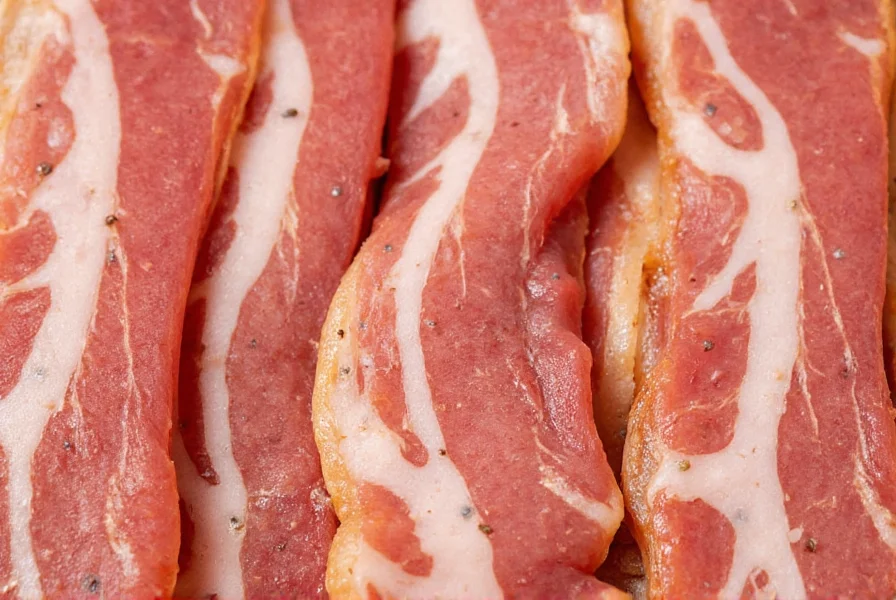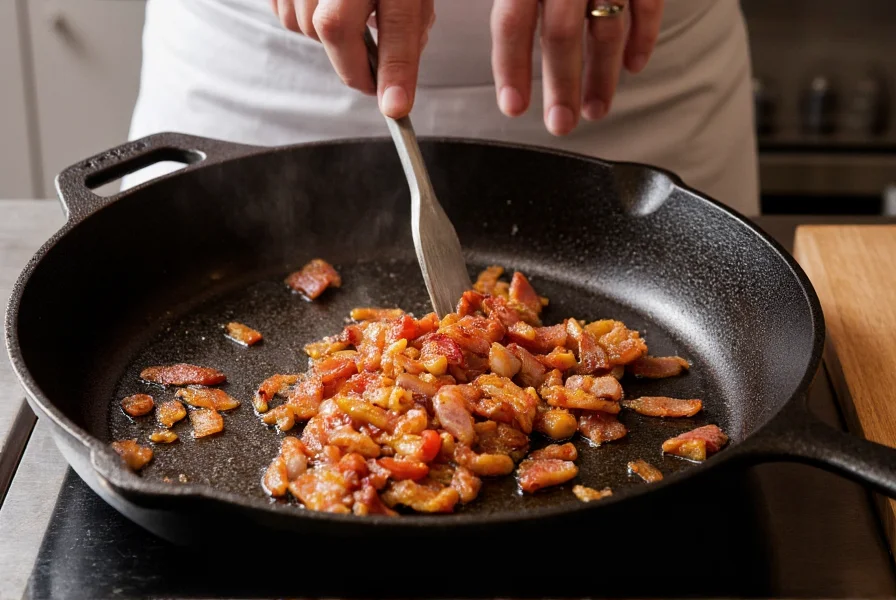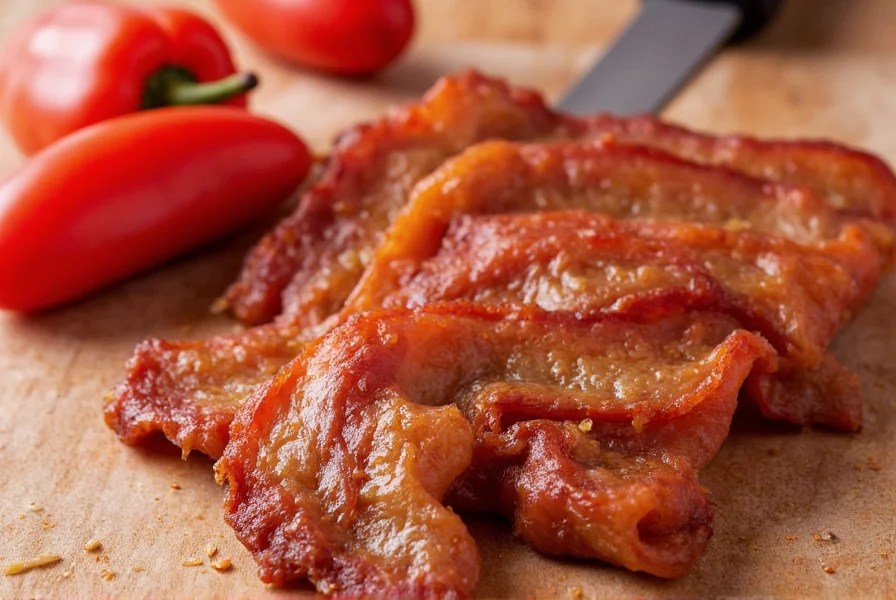When you're looking for what is pepper bacon and how it differs from standard varieties, the answer lies in its preparation method and flavor characteristics. Unlike plain bacon that relies solely on salt and smoke for seasoning, pepper bacon receives an additional layer of complexity through the application of freshly cracked black pepper—typically applied after the initial curing stage but before smoking. This creates a subtle heat that complements rather than dominates the rich pork flavor.
The Distinctive Production Process
Understanding pepper bacon vs regular bacon starts with examining the curing process. While both begin with the same pork belly cuts, pepper bacon undergoes an extra seasoning step where coarsely ground black pepper is rubbed onto the meat's surface. Some artisanal producers use a blend of black, white, and pink peppercorns for more nuanced flavor, while commercial varieties typically stick with standard black pepper.
The pepper application timing significantly affects the final product. When applied before smoking, the pepper partially penetrates the meat, creating a more integrated flavor. When applied after smoking, the pepper remains primarily on the surface, delivering a more pronounced peppery bite with each slice. This distinction explains why different brands of pepper bacon can vary considerably in their heat level and flavor intensity.

Flavor Profile and Culinary Characteristics
Pepper bacon flavor profile offers a sophisticated balance between the natural sweetness of cured pork, the smokiness from the smoking process, and the subtle heat from the pepper. The coarse grind creates texture contrast against the tender meat, with each bite delivering intermittent bursts of pepper flavor rather than a consistent heat.
When evaluating how to cook pepper bacon properly, temperature control becomes crucial. The ideal cooking temperature ranges between 350-375°F (175-190°C), which allows the fat to render slowly while preventing the pepper from burning. Burnt pepper develops bitter compounds that can ruin the entire dish, so careful monitoring during the cooking process is essential for best results with pepper bacon.
| Characteristic | Pepper Bacon | Regular Bacon |
|---|---|---|
| Primary Seasoning | Black pepper + salt cure | Salt cure only |
| Flavor Complexity | Spicy-savory with pepper notes | Salty-smoky pork flavor |
| Cooking Consideration | Lower heat to prevent burnt pepper | Standard bacon cooking temps |
| Best Culinary Uses | Recipes needing subtle heat | Traditional bacon applications |
Optimal Culinary Applications
Knowing where to use pepper bacon effectively separates novice cooks from experienced ones. The pepper element makes it particularly well-suited for dishes where you want a subtle background heat without adding separate seasoning elements. This makes pepper bacon ideal for:
- Creamy pasta dishes where the pepper infuses the sauce
- Egg preparations that benefit from complementary spice
- Bean and legume dishes that traditionally pair with black pepper
- Vegetable preparations like roasted Brussels sprouts
- Gourmet burgers where the pepper enhances the meat flavor
When considering pepper bacon vs regular bacon for specific applications, remember that the pepper element means you should adjust other seasonings accordingly. Recipes calling for additional black pepper may need reduced amounts when using pepper bacon to avoid overwhelming spice levels.
Storage and Shelf Life Considerations
Proper pepper bacon storage tips help maintain both flavor and safety. Like all cured meats, pepper bacon should be kept refrigerated below 40°F (4°C) and used within 7-10 days of opening. The pepper coating doesn't affect the shelf life compared to regular bacon, but it does create a slightly different visual indicator of spoilage—discoloration of the pepper grains often appears before other signs.
For longer preservation, freezing remains the best option. Wrap pepper bacon tightly in plastic wrap followed by aluminum foil, removing as much air as possible. Properly frozen, it maintains quality for 2-3 months. When thawing, always do so in the refrigerator rather than at room temperature to prevent bacterial growth.

Recipe Inspiration with Pepper Bacon
Exploring best dishes with pepper bacon reveals its versatility beyond the breakfast plate. One standout application is in a pepper bacon-enhanced carbonara, where the subtle heat complements the creamy egg sauce without requiring additional pepper. Another excellent use is in a white bean soup, where the pepper bacon infuses the broth with complexity while the beans provide a perfect textural contrast.
For those wondering how to cook pepper bacon for dinner applications, consider dicing it finely and using it as a flavor base for risotto or as a topping for gourmet pizza. The key is balancing the inherent pepper flavor with other ingredients to create harmony rather than competition on the palate.
Frequently Asked Questions
Can I substitute pepper bacon for regular bacon in recipes?
Yes, but with adjustments. When substituting pepper bacon for regular bacon, reduce or eliminate additional black pepper in the recipe to avoid overpowering spice. This substitution works particularly well in dishes where pepper complements other ingredients, such as pasta carbonara or bean soups, but may not be ideal for sweet applications like bacon-wrapped dates.
Why does my pepper bacon sometimes taste bitter?
Bitterness in pepper bacon typically occurs when the pepper burns during cooking. Black pepper contains compounds that become bitter when exposed to high heat. To prevent this, cook pepper bacon at lower temperatures (350-375°F) and avoid letting it reach the smoking point. The coarse grind used in pepper bacon makes it more susceptible to surface burning than regular bacon.
Does pepper bacon contain more sodium than regular bacon?
Pepper bacon generally contains similar sodium levels to regular bacon, as the primary difference is the added pepper rather than changes to the salt cure. However, some commercial varieties may adjust their curing process slightly when adding pepper, so checking nutrition labels is recommended for those monitoring sodium intake specifically.
How can I make my own pepper bacon at home?
To make homemade pepper bacon, start with uncured pork belly. Create a curing mixture of salt, sugar, sodium nitrite (optional but recommended for safety), and coarsely ground black pepper. Rub this mixture evenly over the pork belly and refrigerate for 5-7 days, flipping daily. After curing, rinse thoroughly, optionally smoke at 200°F for 2-3 hours, then apply additional fresh cracked pepper before refrigerating for 24 hours to set the flavor.











 浙公网安备
33010002000092号
浙公网安备
33010002000092号 浙B2-20120091-4
浙B2-20120091-4